★★
“Proof that it’s easier to train an actor to fight, than a fighter to act…”
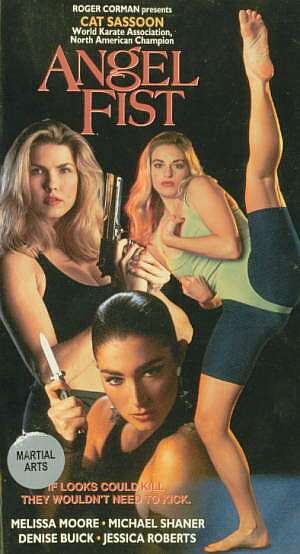 Cat opted not to follow in the footsteps of her father, shampoo magnate Vidal, preferring instead to win various karate titles (allegedly) before moving into movies. Between two parts of the Blood Fist series, she popped over to the Philippines, and made this one for Roger Corman, under the gaze of familiar GWG director Santiago (TNT Jackson, etc.). She plays an LA cop, who comes to Manilla to investigate her sister’s death – she was killed after photographing a political assassination. And, hey, whaddya know? She was also taking part in a karate tournament… I trust I need not extend the plot synopsis any further.
Cat opted not to follow in the footsteps of her father, shampoo magnate Vidal, preferring instead to win various karate titles (allegedly) before moving into movies. Between two parts of the Blood Fist series, she popped over to the Philippines, and made this one for Roger Corman, under the gaze of familiar GWG director Santiago (TNT Jackson, etc.). She plays an LA cop, who comes to Manilla to investigate her sister’s death – she was killed after photographing a political assassination. And, hey, whaddya know? She was also taking part in a karate tournament… I trust I need not extend the plot synopsis any further.
Quite how Sassoon won her titles is unclear from the evidence on view here; perhaps screen fighting isn’t her forte, but there seems to be a lot of doubling and not much apparent ability. She does, however, possess the necessary lack of acting talent – the only things more fake than her dialogue delivery, are her breasts. Which we see, along with Melissa Moore’s, frequently, to no real surprise or, being honest, effect (though the topless kung-fu in which Sassoon engages is a sleazy piece of inspiration, albeit one borrowed from Santiago’s earlier Silk 2)
There is a semi-interesting subplot, in that the villains are actually opposed to American bases in the Phillipines, and this allows for a slight level of political complexity. However, before too long, we’re back to mediocre fist-fights and more titty action. Sassoon, meanwhile, died at a New Year’s Eve party a couple of years back from a heart attack. Which is kinda sad.
Dir: Cirio H. Santiago
Star: Cat Sassoon, Melissa Moore, Michael Shaner, Denise Buick





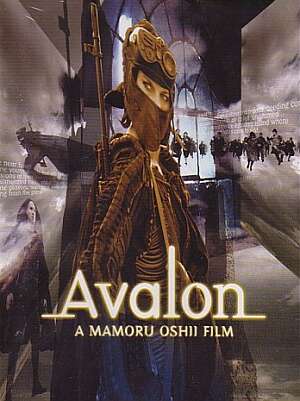 While this is live-action, Oshii is best known for his anime work, such as Ghost in the Shell. That also had an action heroine, great visual style and lost its way in philosophical navel-gazing. There, it was the nature of self – here, it’s the nature of reality. Set in Poland, which may be a first for a Japanese film, the heroine, Ash (Foremniak), is addicted to an illegal computer game called Avalon. When she hears about the existence of a special level in it, she’ll stop at nothing to find the entrance. But, for her, the line between life and pastime is becoming more and more blurred…
While this is live-action, Oshii is best known for his anime work, such as Ghost in the Shell. That also had an action heroine, great visual style and lost its way in philosophical navel-gazing. There, it was the nature of self – here, it’s the nature of reality. Set in Poland, which may be a first for a Japanese film, the heroine, Ash (Foremniak), is addicted to an illegal computer game called Avalon. When she hears about the existence of a special level in it, she’ll stop at nothing to find the entrance. But, for her, the line between life and pastime is becoming more and more blurred…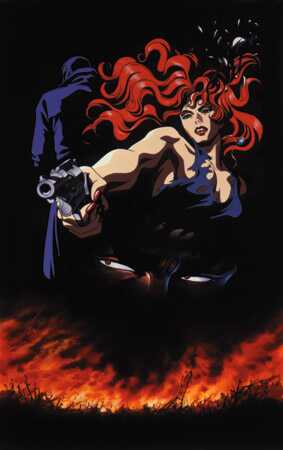 Four stars but no seal of approval? That’s because this is about the most wildly variable animated film I’ve seen. The story and characters are great, but the frequent sex scenes are incredibly tedious and clearly put in solely for the teenage male fan (all pneumatic breasts and moaning). It’s rare for me to say this, but they are genuinely gratuitous, and the film could have coped fine without them.
Four stars but no seal of approval? That’s because this is about the most wildly variable animated film I’ve seen. The story and characters are great, but the frequent sex scenes are incredibly tedious and clearly put in solely for the teenage male fan (all pneumatic breasts and moaning). It’s rare for me to say this, but they are genuinely gratuitous, and the film could have coped fine without them.
 Right from the opening credits, a debt to the Brothers Grimm is clear. In this modern-day version, Red’s stepfather is a sleazebag crackhead, and her mother a street hooker; when both get carted off to jail, Vanessa Lutz (Witherspoon) heads, with basket, up Interstate 5 towards Grandma’s house. Except that on the way, she meets Bob Wolverton (Sutherland), the notorious I-5 killer. And what big teeth he has!
Right from the opening credits, a debt to the Brothers Grimm is clear. In this modern-day version, Red’s stepfather is a sleazebag crackhead, and her mother a street hooker; when both get carted off to jail, Vanessa Lutz (Witherspoon) heads, with basket, up Interstate 5 towards Grandma’s house. Except that on the way, she meets Bob Wolverton (Sutherland), the notorious I-5 killer. And what big teeth he has!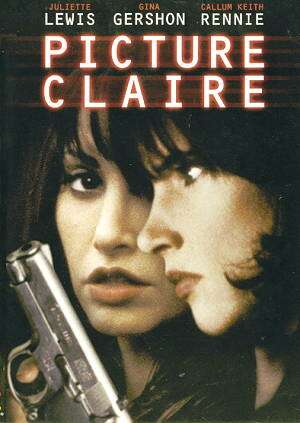 Set over one day, more or less, in Toronto, this can’t make up its mind whether to be a tense thriller, or an art-house drama. The result is an uneasy blend, where most of the elements are fine, yet the overall result falls short of completely satisfying. Quebecois Claire (Lewis, spouting an irritating French accent, and shouting “Beelee!” a lot) travels to Toronto in search of a photographer with whom she had a brief relationship. She doesn’t initially find him, but ends up chief suspect in a murder committed by Lily (Gershon), and also the only person who knows the whereabouts of Lily’s film canister, which is being sought by a psychotic criminal (Rennie).
Set over one day, more or less, in Toronto, this can’t make up its mind whether to be a tense thriller, or an art-house drama. The result is an uneasy blend, where most of the elements are fine, yet the overall result falls short of completely satisfying. Quebecois Claire (Lewis, spouting an irritating French accent, and shouting “Beelee!” a lot) travels to Toronto in search of a photographer with whom she had a brief relationship. She doesn’t initially find him, but ends up chief suspect in a murder committed by Lily (Gershon), and also the only person who knows the whereabouts of Lily’s film canister, which is being sought by a psychotic criminal (Rennie).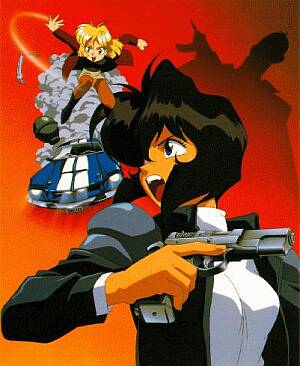
 Don’t look for Aruba Red in your local video store. You won’t find it, because it is a beer. Yes, an alcoholic beverage. So, what in heaven’s name is it doing on this site? Well, as far as I know, it’s the only beer inspired by a female action heroine, albeit a fictitious one.
Don’t look for Aruba Red in your local video store. You won’t find it, because it is a beer. Yes, an alcoholic beverage. So, what in heaven’s name is it doing on this site? Well, as far as I know, it’s the only beer inspired by a female action heroine, albeit a fictitious one.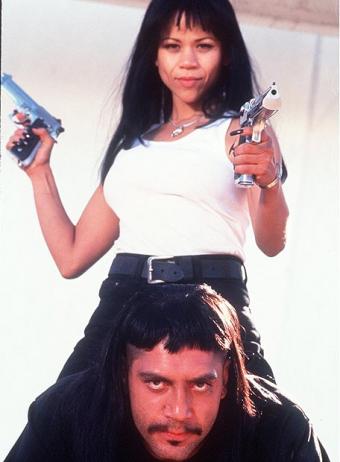
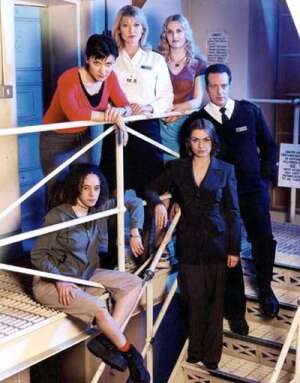 Somewhere around the middle of the series, I realised that this is soap-opera, pure and simple. As someone who’d never be seen dead watching a soap, this was disturbing. Fortunately, moments later, Jim Fenner did something else truly rotten to the core, and my attention went back to H.M. Prison Larkhall. Such is the joy of the show: it defies categorization.
Somewhere around the middle of the series, I realised that this is soap-opera, pure and simple. As someone who’d never be seen dead watching a soap, this was disturbing. Fortunately, moments later, Jim Fenner did something else truly rotten to the core, and my attention went back to H.M. Prison Larkhall. Such is the joy of the show: it defies categorization.
 Director Latt and star (and wife) Little came to our attention through a highly-amusing comedy about TV, Jane White is Sick and Twisted. This is radically different, but still effective, thanks to Little’s performance as Heather. The sole survivor of a warehouse massacre, she is taken, catatonic, to a mental hospital. The bad news is, associates of the gangsters she killed want her dead – try convincing a doctor his staff have been bribed to off you. [They skip the potential ambivalence as to whether Heather actually
Director Latt and star (and wife) Little came to our attention through a highly-amusing comedy about TV, Jane White is Sick and Twisted. This is radically different, but still effective, thanks to Little’s performance as Heather. The sole survivor of a warehouse massacre, she is taken, catatonic, to a mental hospital. The bad news is, associates of the gangsters she killed want her dead – try convincing a doctor his staff have been bribed to off you. [They skip the potential ambivalence as to whether Heather actually